The African Queen (1951)
Directed by: John Huston
Written by: James Agee, John Collier, John Huston, Peter Viertel
Starring: Humphrey Bogart, Katharine Hepburn, Peter Bull, Robert Morley
UK/USA
AVAILABLE ON BLU-RAY: 18th November, from EUREKA ENTERTAINMENT
RUNNING TIME: 105 mins
REVIEWED BY: Dr Lenera, Official HCF Critic
September 1914: news reaches a German East African colony near the Ulanga River that World War 1 has began. The English Reverend Samuel Sayer has his mission burned down and is beaten, after which he dies of fever. His well-educated, snobbish sister Rose Sayer buries him and leaves by the only available transport, the dilapidated river steamboat , the ‘African Queen’ of grumpy, heavy drinking Charlie Allnutt. She’s determined for them to do their bit for the British war effort and destroy a huge German warship, the Louisa, but the more practical Charlie isn’t so keen.…
There are classic movies that are artistic masterpieces, and then there are classics that are often less appreciated by the critical consensus because the main reason for their status is that they’re so enjoyable, but which tend to be seen by far more people, even those who would never consider themselves to be movie buffs. The African Queen, sandwiched between director John Huston’s The Red Badge Of Courage and Moulin Rouge which were obviously much more personal projects for him, is a fine example of the latter. It used to often be on TV when I was very young and I remember watching it several times with great pleasure, even though by rights it ought to have been far too heavy on the romantic stuff. This young boy tended to find that sort of thing so boring. Why did all these cool films from the ‘50s about aliens and monsters always have to insert crappy love stories that interrupted things and slowed them down? But I guess I must have sensed that the love story in The African Queen was what it was largely about, you couldn’t remove it. It any case, I hadn’t seen it at all since then so was intrigued to revisit it. It’s hardly perfect, but it offers a rather singular combination of adventure, romance and character development, as well as providing for this critic a romantic couple who are of a similar age to himself, something still not seen very often in Hollywood movies, at least in major ones, because Hollywood remains largely youth obsessed despite a large amount of America and indeed the world’s population being over 30. And not only that, but neither star is obviously wearing much makeup either except for Humphrey Bogart’s noticeable fake tan. They look more like – gosh – ordinary people.
The original script by James Agee, based on C. S. Forrester’s 1935 novel of the same title, had Allnutt as a cockney, but when Humphrey Bogart was cast parts of it had to be rewritten so Allnutt could become Canadian. Agee then had a heart attack [and died a year and a half later], so Huston got , whose experiences on the film inspired his novel ‘Black Hunter, White Heart’ which Clint Eastwood made into a film in 1990, to finish things, and JThe film was partially financed by a British company Romulus Films ran by John and James Woolf. Michael Balcon, Honorary Adviser to the National Film Finance Corporation, advised the NFFC to refuse a loan to the Woolf’s unless the film starred John McCallum and Googie Withers rather than Humphrey Bogart and Katharine Hepburn. It was only due to the Woolf’s personal intervention that they persuaded the chairman of the NFFC, Lord Reith, to overrule Balcon. Much of the film was shot in Uganda and the Congo, where cast and crew endured sickness and spartan living conditions during their time on location. Hepburn shot one scene with a bucket beside her to be sick in between takes, while Bogart and Huston escaped illness by drinking whisky instead of water which unknown to everyone was straight from the river and unfiltered. Scenes on board the ‘African Queen’ were filmed using a large raft with a mock-up of the boat on top, while a boat called the L.S. Livingston was used for other shots. It still provides cruises around the Florida Keys. The ‘Louisa’ was inspired by the German First World War vessel Graf Goetzen which operated on Lake Tanganyika until she was scuttled in 1916 during the Battle for Lake Tanganyika and was later used by the British as a passenger ferry. It was portrayed by the steam tug ‘Buganda’. Studio scenes were shot in Britain, mostly Isleworth Studios, Middlesex. The African Queen was a hit though drew a mixed critical reception despite giving Bogart his only Oscar.
The usual dramatic orchestral flourish over the main titles is quickly replaced by the sounds of the African jungle as the camera pans down from looking at a tree and passes beneath several more before focusing on the roofs of a native village, in what is a memorable opening moment, telling you that, yes, this really is Africa, not a studio set that you may expect to see interspersed with mismatching shots of wildlife taken from documentaries like in a Tarzan film [it wasn’t until 1957’s Tarzan And The Lost Safari that they began to partly shoot those actually in Africa]. And then we get an interesting scene that’s surprisingly critical of Christianity for a film made in an Old Hollywood when it was even forbidden to even, “mock a member of the clergy“. The Rev. Samuel Sayer and his sister Rose are proudly leading a classroom full of African kids in hymn singing, but most of the children either have trouble with the singing or aren’t paying attention, then some are even more distracted when the ‘African Queen’ chugs up the river and Charlie Allnutt steps out to throw his cigar away to be fought over. While it’s not verbally stated, the message seems clear: there’s little point to this missionary malarky and therefore much of Rose’s life has been a waste up to now. Charlie brings the siblings their mail so they feel obliged to ask him in for tea and even dinner, but clearly look down on him, particularly his noisy stomach. However, German soldiers turn up to burn down the village and round up the men to be soldiers. Their leader knocks Samuel to the ground. He’s clearly weakened mentally as well as physically, and as he lies dying he seems to [again, surprisingly] regret what he’s been doing for much of his life. Charlie, the mine where he works having been destroyed, returns to find only Rose alive and offers to take her with him. However, he doesn’t like Rose’s suggestion that they convert the ‘African Queen’ into a torpedo boat and sink the ‘Louisa’, pointing out that navigating the Ulanga River to get to the lake where it resides would be suicidal. But Rose is insistent.
We’ve all seen lots of bickering couples in movies who have to try to get along, but Charlie and Rose remain a joy to watch because of the writing and the performances of Humphrey Bogart and Katharine Hepburn who are both starting to lose their looks. They seem to inhabit these two characters who were both different to their usual screen personas, and make them hugely likeable despite their flaws being obvious. Their dialogue mostly feels natural, and the arguing is actually kept surprisingly low key, only really bursting out when Charlie gets blotto and insults Rose. Her response is to throw his many bottles of gin into the river, and it’s a natural progression seeing as she earlier has a truly offended expression on her face when he drinks in front of her – though I’m not sure that his reaction to that would be as calm as all that. However, the changes in both characters is very well done, such as the way they greet each other. It’s so natural in its flow that you barely notice except for the change in attitudes in their eyes. She’s initially the more hostile one, even making him sleep outside in heavy rain so that she doesn’t have a man in the cabin, before changing her mind. Her greatest moment of change is probably when they run some rapids and she says, “I never dreamed that any mere physical experience could be so stimulating”! It sounds corny, and in the wrong hands could have been laughable, but it works, largely due to Hepburn’s delivery. The progression from pals to lovebirds happens surprisingly quickly, but there’s genuine sexual chemistry between these two [despite Bogart’s wife Lauren Bacall being on set], so we buy it. They first kiss while celebrating success in navigating some rapids. Embarrassed, they soon break off, but can’t keep away from each other for long. However, Charlie still doesn’t really want to continue with this seemingly suicidal mission, and the ‘African Queen’ is getting increasingly damaged.
Rose proves to be as tough and resourceful as Charlie, and you expect her to struggle to reconcile her yearnings for and her intimacy [it’s quite obvious, even though the censors demanded changes] with this decidedly un-religious man with her faith, but this doesn’t seem to happen. Instead we’re told that, actually, there’s room for both if you want it. Well I’ll be damned. And, despite consisting largely of two people traveling and talking, things move at a fair clip. Scenes are kept fairly short and we’re never far from an obstacle, from leeches to a German fort. And in a way there’s a third character, the ‘Queen’ herself, highly temperamental and eventually really letting the side down. But, while us old movie watchers get so used to seeing obvious rear projection that we just accept it, it’s a bit jarring when it makes some appearances in this film because we’ve been seeing all that footage where it’s clear that the stars are really on that boat in the African jungle, and that they’re doing all their own stunts too. Some linking material is repeated and the same locations are used at different points as the boat chugs its down the river, then when we switch to a studio for one major section the difference is obvious. It’s a very good jungle set, but you instantly know it’s a set, though it’s hard to see how they could have entirely realised these scenes in a real river so one shouldn’t really complain too much. The climax, which they couldn’t decide upon, may not be too believable, though it’s neat to have bad guys capture someone and that person quickly confessing all, thinking that there is nothing to lose.
It’s interesting to watch certain scenes in vintage films and consider how they would be handled today. One of The African Queen’s most exciting bits is when the boat goes over a waterfall. Today, this would most likely be filmed with lots of cuts to heighten the intensity. However, in this 1951 film it’s shown entirely at a distance. This has its positive and negative points. On the one hand, we’re not as much on the edge of our seats and no attempt has been made to let the viewer feel what the characters are experiencing. But on the other hand we get much more a sense of the geography and what’s at stake, and the model boat and people look fine. Allan Gray’s musical score is okay but unmemorable, but The African Queen is really one of those films where criticising certain aspects is of little point, because the whole thing just works so darn well. It’s like with Bogart’s other much loved classic Casablanca where parts of its story actually make no sense if you think about it. It doesn’t really matter, you’re still watching movie magic. And, while Huston set out to make what was primarily an entertainment here, some artfulness does seep through. There’s a lovely bit where Charlie and Rosie are trying to push through a section of the river filled with weeds, and, exhausted by their travails, collapse unconscious in the boat. Even though we know in our heart of hearts that they will survive, it does seem that they could be doomed. However, a crane shots pans from their boat to reveal that they only have a tiny distance to go before they’ve reached the end of the reeds part of the river, and after that it’s clear waters. It’s a lovely metaphor for hope against all odds, and sums up everything about what the cinema can do. And you’d expect the scene to end with the camera panning up to the heavens seeing as Rosie prayed for divine help, but instead it seems like it’s going to before stopping. Huston and company are far too intelligent for that sort of thing.
Rating: 









The African Queen got a 4k restoration nine years ago and ITV Home Studios released it on Blu-ray and DVD in the UK while Paramount brought it out in North America. Eureka’s release is probably based on the same master, but don’t let that put you off, it looks so good you’d think the restoration was done yesterday. It’s lush and detailed and with perfectly managed grain and no blemishes whatsoever. The only flaw is one common to many old movies – the shots with back projection are very obvious, though there’ s far less blue around characters than in many other films from the time.
The African Queen has has quite a few releases for home viewing, often with different special features. Eureka’s version finally combines most of them all in one package, making this the definitive release of the movie. It also adds a few features of its own, beginning with a music and effects track. The audio commentary comes from the Carlton/ITV DVD and it’s splendid. Cinematographer Jack Cardiff may have been getting on, but he’s fabulous company with a great many stories to tell, from an enormous army of ants disrupting production so much they poured gasoline over them, though this only worked for about half an hour – to Huston risking his life to save Hepburn from a falling boiler – to Cardiff, Bogart, Hepburn and a few others having to wear women’s clothes. Production on this film may have been hard, but it was obviously never dull. I’m surprised that there wasn’t more technical stuff about the photography, and Cardiff does leave some very long gaps towards the end, but he clearly enjoys reminiscing, is proud of the film, and you’ll be glad you listened to him.
Now we have the three new featurettes, and each of the three contributors seems to take care not to repeat material from the already quite exhaustive-seeming commentary. Neil Sinyard focuses on things like Bogart’s performance being unfairly criticised, Huston realising he was unintentionally making a comedy when he first saw Bogart and Hepburn together, and the idea of indomitability making it quite a personal film for Huston after all, while still giving the sense of a decent overview. Fellow Eureka stalwart Kim Newman, a tad more humorous than Sinyard, emphasises that the difficult making of the movie has been part of the appeal since it was first released, that older couples were actually quite prevalent back then, and compares Bogart and Bacall’s image and filmography. He also tells us that Charles Laughton and Elsa Lancaster were to star at one point, which would have been – interesting. And then Peter Viertel goes quite into how he wrote much of the dialogue, how they couldn’t figure out the ending, and White Hunter, Black Heart which had a second script circulating that went into the filming of The African Queen before Clint Eastwood got him to write a different screenplay.
The audio Q and A with Huston, which originally followed a screening of The Maltese Falcon, now plays over most of the film, suffers from the usual, if unavoidable flaw of the questions being so far away from the microphone that we often can’t here them – though amusingly there’s one question Huston doesn’t understand either. He’s smart, honest and funny as he answers a variety of questions [listen out for his opinion on Ronald Reagan who was almost in The Treasure Of The Sierra Madre], as well as telling stories connected with many of his films, from a woman with a hammer interrupting work on Moulin Rouge to Paul Newman casting The Man Who Would Be King. The African Queen is talked about a little. Funny how he says producers keep asking him to make Under The Volcano, which he eventually did in 1984. The second Q and A is much shorter, and just plays over publicity stills, but it followed a showing of The African Queen so the questions are very specific to the film. Script supervisor Angela Allen was there on set [and also doubled Hepburn for one scene] so provides some good reminisces, admittedly mostly stuff we’ve heard already, but interestingly downplays the lack of comfort element and dispels the rumour that Bogart and Hepburn didn’t get on. Anjelica Huston, who was born during filming, talks mostly of her father, her most interesting comment being that he liked Bogart so much because he was the man he wanted to be.
‘Embracing Chaos: Making The African Queen’ was on the second DVD release and it’s fairly comprehensive, though again we’ve already heard most of the stories on previous features. It’s a nice piece though, with several people, notably Martin Scorsese, showing their admiration for the film and why, and we do get a few new tidbits, such as C. S. Forrester basing Rose and Charlie on his own parents, or the story of Bogart building up to and accepting his Oscar. And finally, from the Paramount Blu-ray, we get a radio adaptation that aired a few months after the release of the film. Greer Garson brings something of her own to the Rose role, Bogart sounds like he’s loving doing Charlie again, and we get the usual ad interruptions, this time for Lux Toilet Soap. The film script is followed, though the action is understandably skipped over.
An evergreen classic given the royal treatment. Eureka’s Blu-ray of The African Queen comes Very Highly Recommended.
SPECIAL FEATURES
*Limited Edition Hardbound Slipcase [3000 copies]
*Spectacular 4K restoration by ITV and Paramount Pictures
*Optional English subtitles for the deaf and hard-of-hearing
*Uncompressed LPCM audio (original mono)
*Isolated Music & Effects track
*Audio Commentary by cinematographer Jack Cardiff
*Newly filmed interview with film historian Neil Sinyard [15 mins]
*New video interview with critic Kim Newman [18 mins]
*A video interview with co-screenwriter Peter Viertel, author of White Hunter, Black Heart, by filmmaker Michael Scheingraber [17 mins]
*Audio recording of the Guardian interview with John Huston at the National Film Theatre in 1981, discussing his work and career [88 mins]
*Audio recording of an on-stage NFT discussion about the film with Anjelica Huston and script supervisor Angela Allen from 2010 [30 mins]
*Embracing Chaos: Making The African Queen – a comprehensive documentary about the making of the film [59 mins]
*Lux Radio Theater adaptation from 1952 with Humphrey Bogart and Greer Garson [52 mins]
*Original theatrical trailer
*PLUS: A LIMITED EDITION 60-PAGE Perfect Bound Collector’s book featuring archival writing on the film

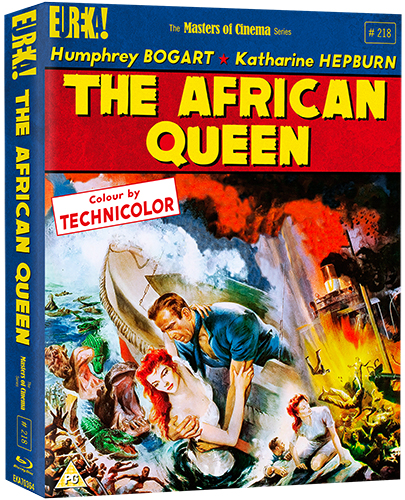
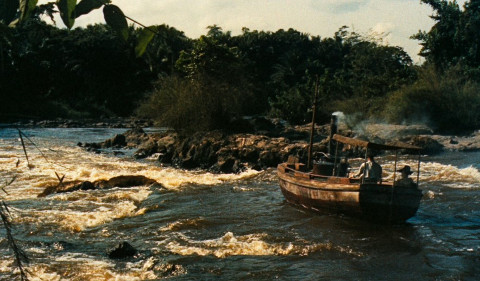
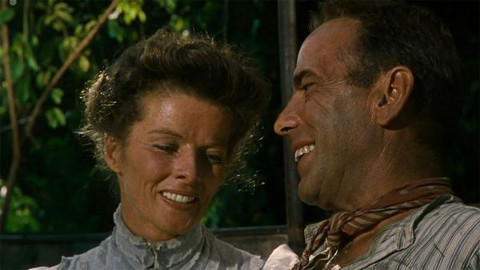


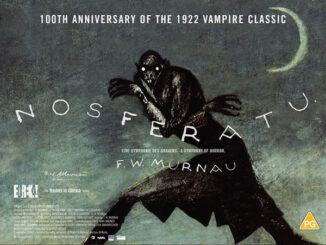
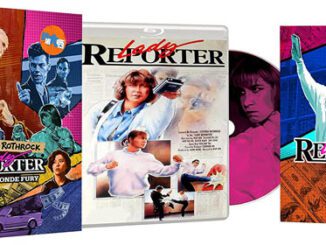
Be the first to comment